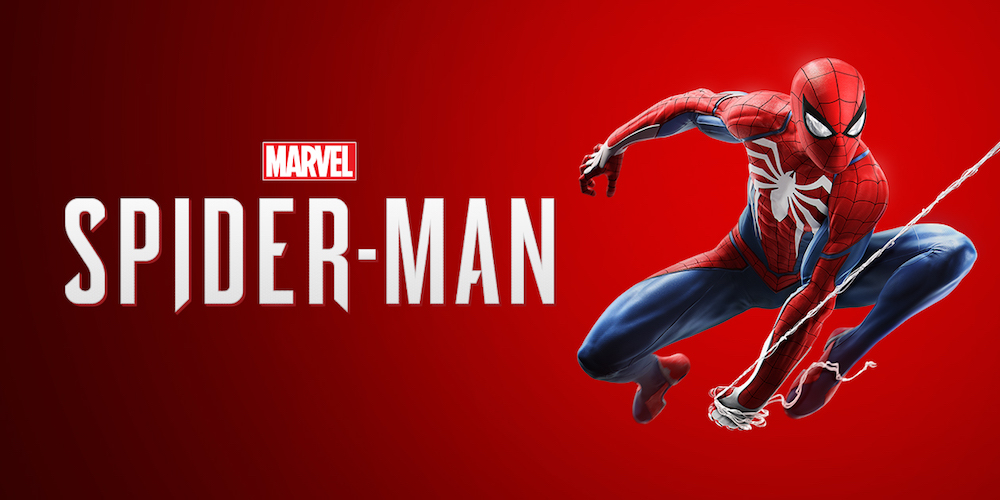
Spider-Man makes more sense as a video game protagonist than just about anyone. Any super-powered crime fighter is obviously a suitable fit for an action game, but Spidey’s acrobatic approach to beating up baddies is especially conducive to cool combos. Running, climbing, even flying around an open environment can be super fun, but there’s nothing quite like swinging from skyscrapers for quick but engaging traversal. Peter Parker’s private life and how he balances it with his hero-work is also down-to-earth and relatable, and perfect for a player-character to endear and invest us in a story. Not to mention Pete’s passions for photography and science, and the mechanical opportunities they account for.
After the awesome Arkham series proving the potential of superhero games and the MCU making the Marvel brand more popular, important and valuable than ever, a big-budget, AAA Spidey game has never made more sense. Marvel know a thing or two about producing successful entertainment properties, so it’s no surprise they’d trust Insomniac Games with their friendly neighbourhood web-slinger. Marvel’s Spider-Man is a fresh slate, much like Rocksteady had with Batman; no tie-ins, no promotional priorities, just an opportunity to make a great game with beloved characters.

How fun it is to get around the city is a real make or break with a character like Spider-Man. Moving needs to be simple to execute, but there’s a fine line between keeping things accessible and having the game feel like it’s playing itself. Insomniac sits right on that line here, delivering maneuverability options that are totally doable for players at any level, but broad and specific enough to allow a wide margin of skill. Typically, Spidey games keep the web-slinging feasible by nonsensically simplifying the process, basically just having the character fly around while shooting webs up out of the player’s perspective. It’s a functional solution for a simpler time, but Marvel’s Spider-Man doesn’t settle for functional. Pete’s webs can’t help him get around with something to make contact with, and therein lies the crux of the game’s awesome traversal mechanics.
If you’re holding the swinging button down while airborne, Spidey will shoot a web at a place that makes sense to swing from. It’s not something that’ll take your breath away, but It’s a system that really can’t be appreciated enough for so many reasons. The big thing is that it makes sense and keeps things believable, but the diverse scenarios it allows for are a fundamental cornerstone for the entire game. The height of your surroundings restricts the altitude you can travel, your distance from the web’s point of attachment effects the angle of your swing, and your movement speed directly correlates to the point you choose to enter and exit the parabola defined by these variables. It would be extremely complicated to the point of near impossible execution, but here’s the thing; Spidey does all the hard stuff automatically and lets us control the critical, fun stuff.

We don’t have to pick each point to swing from or make split-second calculations to get our angles just right, we just tell Spidey where to go and how to get there, and he does the brain-work, all the while feeling perfectly responsive to our own control. Nothing is stopping you from holding R2, heading straight in one direction and letting Pete find his own path. He’ll run up obstacles in his way, swing when he can, and dive between the structures he needs to all with just this one command.
The reason the system is so engaging, though, is that the more actively you control Spidey, the more decisions you make for him, and the more you consider all the tricky stuff yourself, the faster, more accurate and more entertaining the game becomes. Diving to street level to start a swing at a high speed, letting go of a web at terminal velocity to sustain momentum, point-launching from the edge of a building rather than swinging below it or running along a building to shoot around it’s side rather than curving a swing are the kinds of things that become more and more natural to pull-off as you play, and the aptitude you can develop is far beyond the one-button basis of swinging.
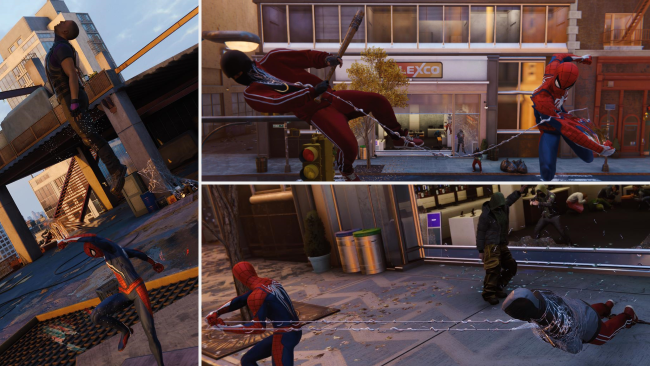
Knocking out bad folks is similarly substantial yet straightforward. Spider-Man’s mobility lends itself so perfectly to the kind of combat people tend to associate with the Arkham games. Pulling yourself towards a thug with a web makes a lot more sense than The Dark Knight leaping 20 metres to punch the next closest guy to him, and Spider-sense has a lot more context behind it than lines showing up around a dude’s head before he attacks. Spidey’s fighting style does owe a lot to Batman’s, though, with a bunch of similar enemy variants and ways of dealing with them, in particular. Where Arkham’s combat feels very precise and focused on hitting the right attack at the right time; Spidey’s feels much more creative and improvised.
There are enough options to play with here to string together into loads of DIY combos, and figuring out which moves you like in which order makes for combat that expands as the player does. Zipping right into an enemy to beat him down, webbing a gun out of his arms and throwing it back at him, or sticking him to a wall with some well-placed web are just a few of the many equally feasible options, all of which enable their own little style of beat-downs. Spider-Man is the only character you’re going to play as who shoots webs, so the multitude of ways to use them in combat is a distinct point of difference from combat contemporaries.
As more gadgets are unlocked, these options multiply, in a style very true to Insomniac’s gadget-heavy lineage. It’s a bummer there’s no seamless way to combo loads of gadgets together in one string (they’re changed via a radial menu), but mixing these between my other attacks is my favourite thing to do. Mix in environmental interactions and ledges to knock guys off of, and you’ve got yourself some super dynamic fights.
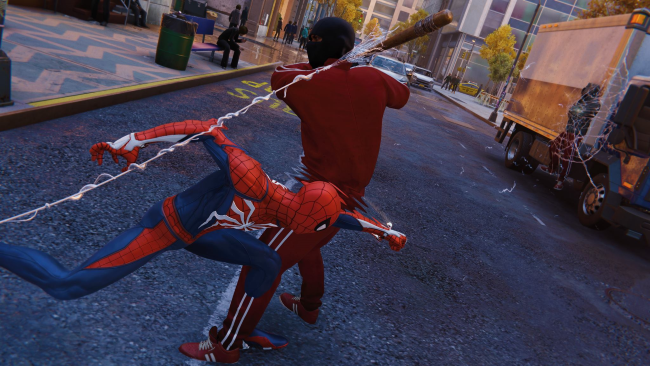
Spider-Man’s foes don’t just feel like punching bags to play with either. If you’re not paying attention or just mashing punches, you’ll probably get chewed up pretty quickly. The more thoughtfully you play, the more success you’ll find, and this is multiplied by the Focus system. Landing hits without taking them fills up your Focus Meter, which can then be used to regenerate some health or to execute a suit power – super moves. If you’re ploughing through some low-level thugs and trying to knock them out quickly, you might as well build focus to use the suit power. If you’re up against a tough enemy that hits hard, that focus is going to be valuable for refilling that HP. As with swinging, there’s always a reason to play as best you can, and the game strongly grips your attention as a result.
Comparable to Arkham again, are the game’s stealth mechanics. Spider-Man can web up some unsuspecting criminals and leave them hanging from a perch, zip in and take out a guy quietly, or even knock down parts of the environment to get the drop on his opposition. The fact that Spidey’s gadgets work here as they would in combat is awesome, allowing for some fun trap placement, or just strapping a guy up to a wall from afar before anyone knows you’re there.
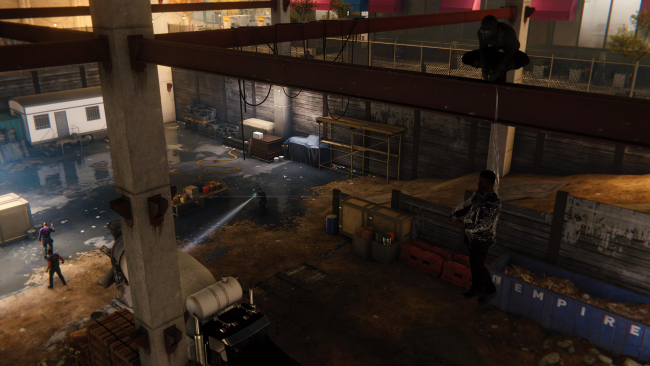
The stealth angle is also applied to parts of the game where Mary Jane is playable, giving these bits a nice little flavour of their own. Creating a divide between Spider-Man’s capabilities and that of a normal person is a clever idea that’s well communicated here, letting us really appreciate the power of Spider-Man after having to cower as an average person.
What disappointed me with the stealth across the board, however, is the silly video-gamey AI when it comes to finding the player. They won’t look up or around to find you, they’ll stroll around in patterns that make no sense for anything other than letting us pick them off, and their field of vision is super forgiving. It makes sneaking around feel pretty cheap a lot of the time, knowing you don’t really have to evade anyone, just stay in the spots you’ve been encouraged to.
Splitting up all the encounters are a handful of puzzle systems, giving us a fun way to engage with Peter’s scientific side. These are very reminiscent to the dozens of hacking/unlocking minigames Insomniac has built for the Ratchet & Clank series and effectively spread the main stuff apart. They’re interesting and complicated enough that you’ll have to stop and think about how to solve them, but never hard enough to stump you. They add some variety to the game, but also reflect an important part of Peter seamlessly and purposefully.
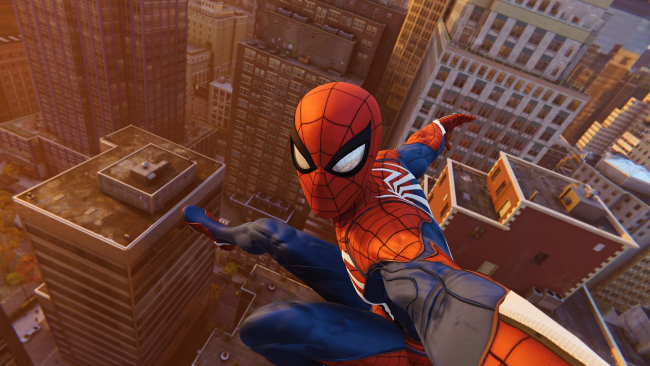
With all this said, you’d think Spider-Man was a very mechanically focused game – and it is – but that’s not to discount the quality of its narrative. In fact, the story here is as valuable to the game as each of its other strengths. Insomniac have talked about how they find the most interesting Spider-Man stories to be the ones where Peter’s personal life and his role as Spidey intersect and are at odds with one another, and I think they’re absolutely right. They knew exactly what kind of story they wanted to tell here, and they executed on that goal exceptionally.
The plot’s premise draws pretty strongly from the Brand New Day run of the comics, building out from Aunt May’s job at the FEAST centre, Mr Negative, and his plans for the dangerous “Devil’s Breath.” As things unfold, though, they pretty quickly develop into far more personal and interwoven threads than those of their conception. As some classic Amazing Spider-Man and renowned Ultimate Spider-Man characters and arcs come into play, they do so in fresh ways that feel new and exciting but absolutely respectful to the source material. Much like the MCU, Marvel’s Spider-Man has the wonderful advantage of hindsight, letting them cut out the silly bits, coalesce similar ideas into one stronger idea, and motivate characters together in a big picture. It lets them turn a handful of good stories into one great one while letting them draw from Spidey’s history without feeling too derivative. I love Spider-Man, and I can confidently say this is my favourite story starring the web-head.
Peter Parker’s a relatable guy, and that’s communicated super effectively here. Whether it’s through his remorse for being unavoidably late, his tenuous relationship with MJ, or his reluctance to be a burden on Aunt May, Pete’s just a good guy doing his best. This is why it’s so empowering to be Spider-Man. When things in Peter’s life are a bit messy and feel out of his control, it’s cathartic to be capable of stopping a mugging or saving a hostage – doing something undeniably positive.

The other characters are excellent, too. Pete’s allies are distinct, and each reflects a different piece of his personality, while the bad guys’ motivations are suitably layered. Where a character like Rhino really doesn’t deserve much rationalising, he doesn’t get any time wasted on him. Others like Mr Negative, though, are carefully constructed to make sense and act with reason.
Some of these scenarios and relationships are pretty archetypical and even predictable, but they’re always executed believably and with purpose. Superb performances and wonderfully written dialogue are responsible for how well this all comes through. Things get a little cheesy from time-to-time, but when it’s time to be serious, no punches are pulled. The emotional moments in this game are sincerely impactful, whether they be a dramatic moment or one little line of dialogue. The tone is very comparable to Insomniac’s own Ratchet & Clank games in this way, and the heart present throughout is just as bright. Some of Pete’s jokes are lame and can get annoying on repeat listens, and J. Jonah Jamieson’s podcast is a one-note bit, but they’re purposeful in expressing the isolated independence of Spider-Man to the degree that they’re hard to complain about.

Outside of the story, there’s no shortage of stuff for Spidey to get up to. Unfortunately, their quality doesn’t tend to be nearly as high. There are all the typical open-world and superhero game tropes here; towers that uncover the map, enemy bases to beat up, standard collectibles to gather. These things are pretty good, as standard as they are. There are some combat, stealth and traversal challenges too, only offering their highest rewards for near-flawless runs. Repeating these to perfection took some time, but it was always worth putting in for the satisfaction of that perfect run.
Some of the more interesting side-objectives are Oscorp research stations Pete checks in on for his best bud Harry. These have you doing things like swinging through smog or following pipes back to ruptures – and they stand out. My problem is the incessant high stakes. Every time you stumble upon one of these, it’s “Oh no, if I don’t fix this in two minutes, people will be killed!”. It’s a convenient and unnecessary attempt at rationalising the completion of these tasks that just feels dumb after the first few, despite the interesting objectives they produce. Some of the smaller things, by comparison, have Spidey helping folks out just because he wants to and he’s capable. These didn’t need the end-of-the-world stakes to be effective, and neither did the Oscorp labs.

New York is beautifully designed and structured, but certainly feels a little lifeless. Pedestrians are mechanical and purposeless, and the commotion in the streets all feels very rigid and hollow. Reactions to Spider-Man are unaffected by the events of the story, and the interactions with folks on the street that exist are empty and pointless. It’s not a focus of the game, and by no means does it adversely affect the thrill of playing, but it is a low point in the otherwise high quality on show. A little more environmental variety could have gone a long way, maybe some more interiors or notable weather changes, but that’s not to say New York is any less than a great playground as is.
Some of the progression systems leave a little to be desired, too. Experience points and collectable resources effectively incentivise completion of side missions and such, but unlocking suits and gadgets with no narrative explanation was a bit of a letdown. The couple of suits that you do have a reason to acquire feel awesome to have in the collection, but everything else feels more like cheat codes than earnable gear. Upgrading gadgets feels thoughtless, as it always just comes down to upgrading everything you can afford, no trade-off or consideration to be made. Insomniac have done this stuff better than anyone before, in my mind, with the system they’ve used in a bunch of games that has gear level up as it’s used. Having Pete figure out how to improve a gadget after spending a certain amount of time with it would have made perfect sense to me, had each upgrade feel like a reward well earned, and encouraged diverse playstyles. What’s there instead might as well be an automatic process.
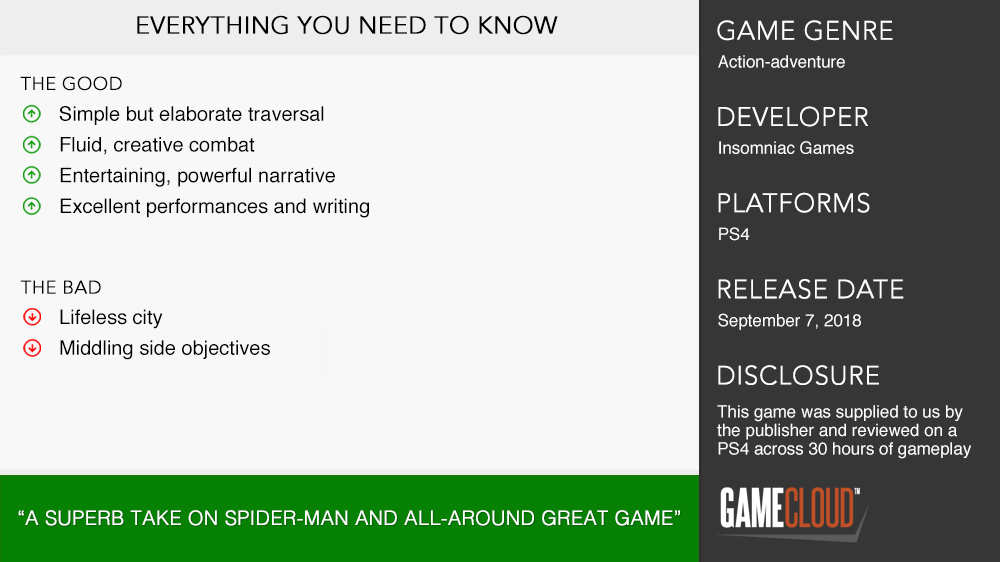
Insomniac Games are my favourite developers, Spider-Man is one of my favourite characters, and comparable games like InFamous and Arkham are among my favourites of all time. Even still, Marvel’s Spider-Man impressed me greatly. It’s not without its flaws, but swinging around, shooting webs and building up combos feels so good that they’re hard even to notice. Spider-Man’s story is exciting and hits hard at its biggest moments, while excellent writing, performances and presentation meet the high standards of the game’s magnificent mechanics. Marvel’s Spider-Man has great strengths on many fronts, and plenty of substance well worth swinging through.











